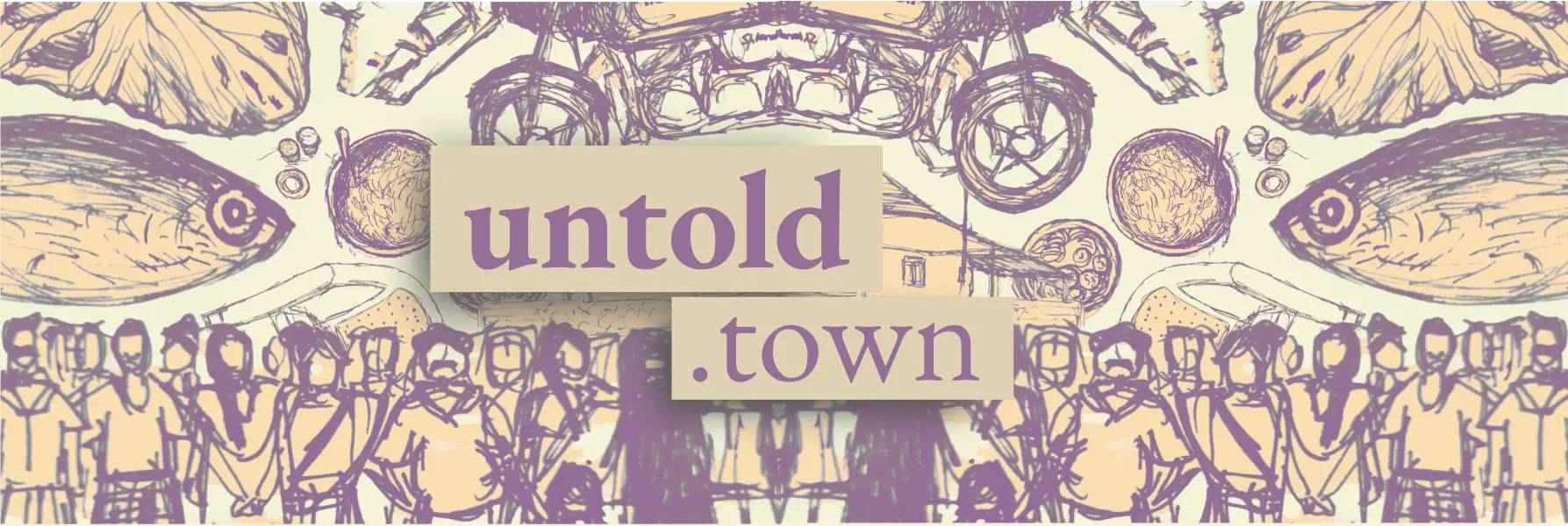“The Crown of Jaffar Miya’s Badshah’s”
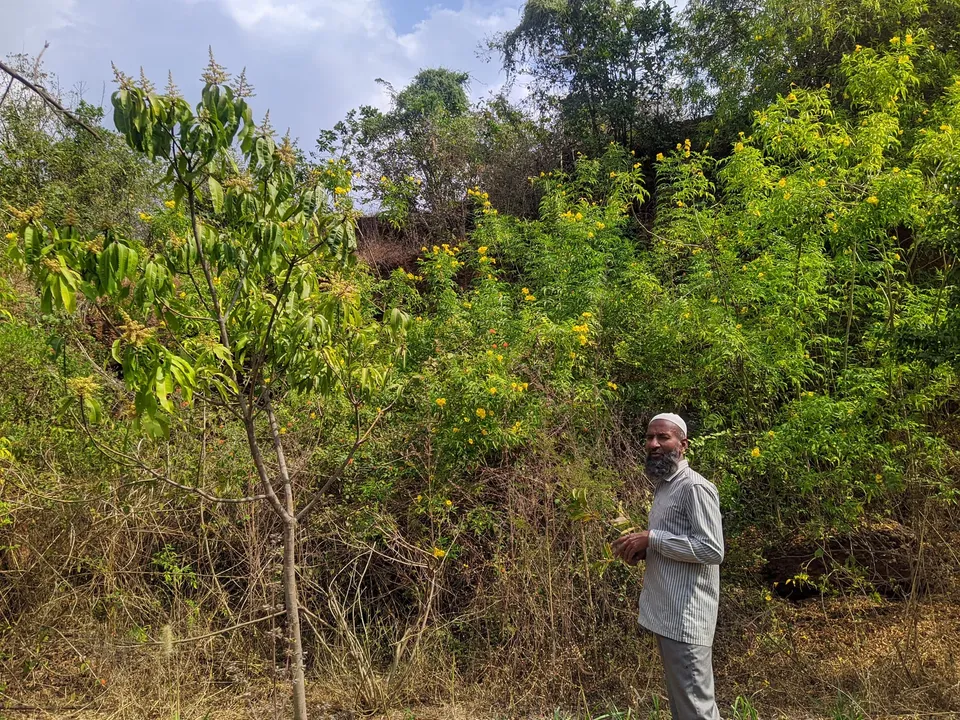
Field notes by- Harshawardhan & Abhishek
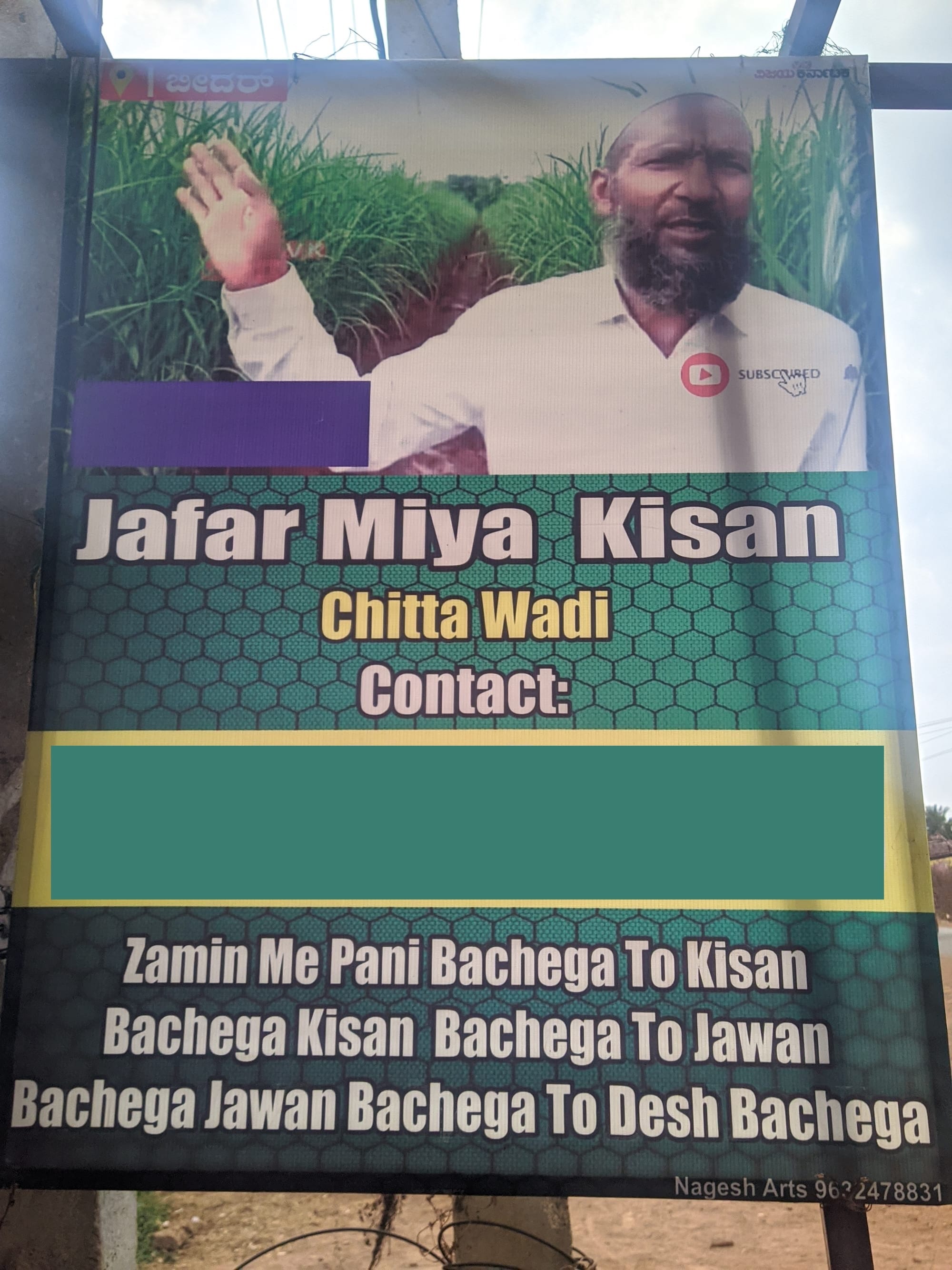
💡
Context belongs to work produced under Climate Resource Centre Initiative
Observations from Jaffar's Farm
Total farming area- 10 acres (7 acres in name of Jaffar and 3 acres in name of his wife)
Soil type- Red soil.
The outer fragmented area includes sandalwood and Custard apple plantations. He cultivates sugarcane in 3 acres of the total land.
- The cropping pattern is unique and Jaffar observes this as an healthy practice to preserve the health of the soil and to maximise the output.
- Jaffer’s Model of Sugarcane cropping pattern- Sugarcane planted in two rows and some in three rows. His model uses zigzag pattern, planted rows make a bed (two/three rows). The width of each bed is between 3-4 feet, the space between each bed is 6 feet.
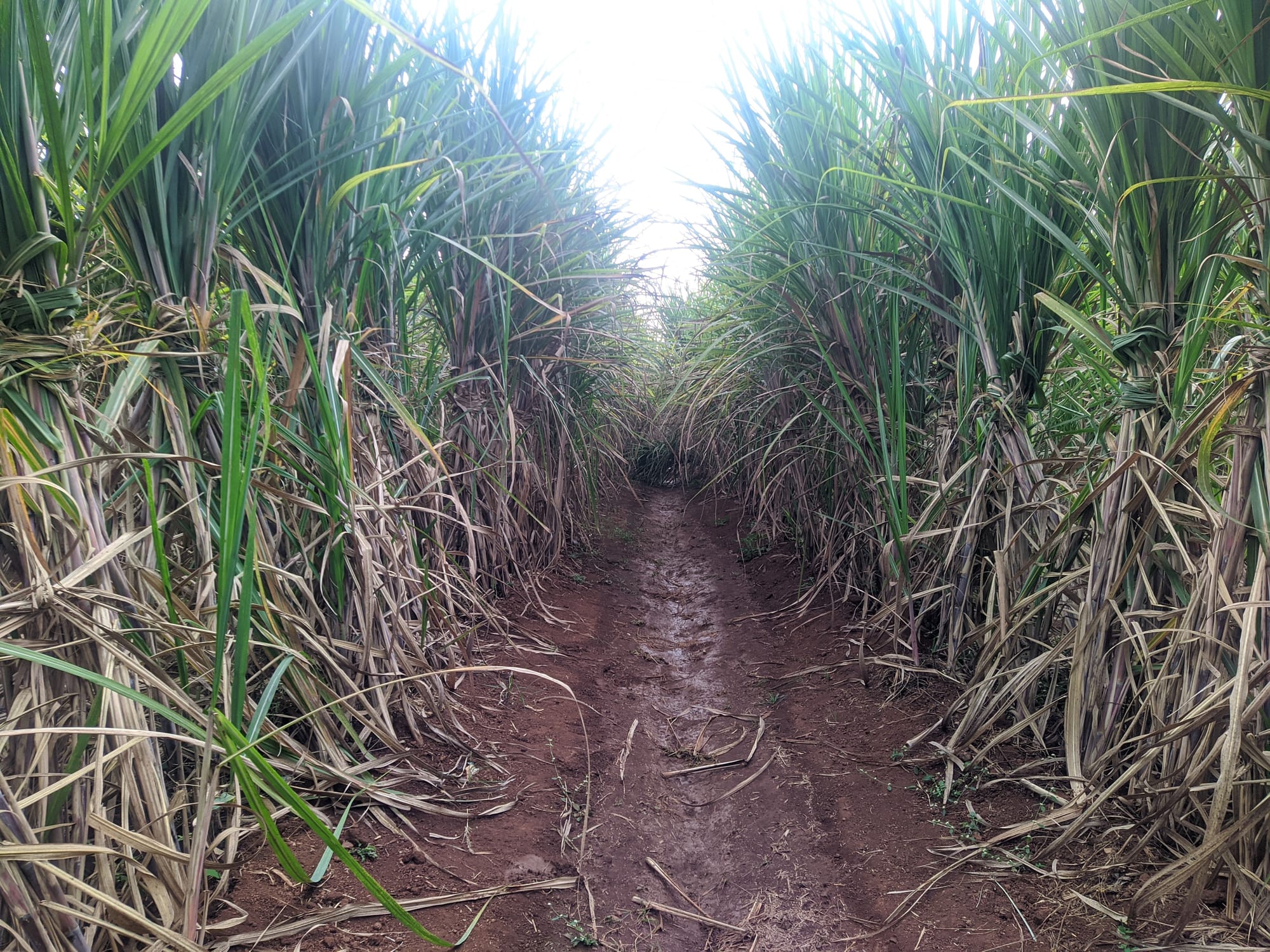
- Jaffer’s argues that the space between beds allows proper sun and aeration instrumental in enriching soil health. His priority remains in preserving soil health, allowing free movement of wind, sunlight over bed and later tilling, mixing this soil along the bed soil. This way he ensures the bed soil is fresh, soil health is preserved and is abundant in soil microorganisms. The space between beds also helps in mitigating water logging problem incase of heavy rains.
- Note: Tiling and intermixing happens once or twice every two months.
- Irrigation type- Drip irrigation. Each row is facilitated with a line of drip pipe.
- Intercropping is also practiced in-between the beds (mostly vegetables). Intercropping benefits him with secondary income.
He is against the practice of burning the sugarcane residue. He reasons that the burning over soil affects the qualilty of soil health and killing the soil microorganisms.
Note- Several studies have indicated the socio-ecological impact of open burning in agriculture. The following report highlights the problems with open burning.
Fire-in-the-Fields-OB-ReportA4-Final_22nov2015.pdf
- Local Knowledge observation- Decolouration of leaf blade/ Whitish colouration of leaf blade indicates the deficiency of Iron content in the soil. Jaffer highlights this as a common deficiency in red soil, locally known as ಘುಡ್ ರೋಗ (Ghud Roga - Term commonly used by farmers to indicate infertile growth of crops, Ghud means Infertile).
Some other observations-
- He patiently unfolded few indications of plant health and structure growth while guiding us along the mango orchid which we feel adds value to local knowledge systems.
- He indicates that the branching pattern of mango tree should be carefully examined. Sideways growth on twig can indicate undesired growth of branch (Vegetative malformation, Refer study attached) and should be periodically examined and pruned.
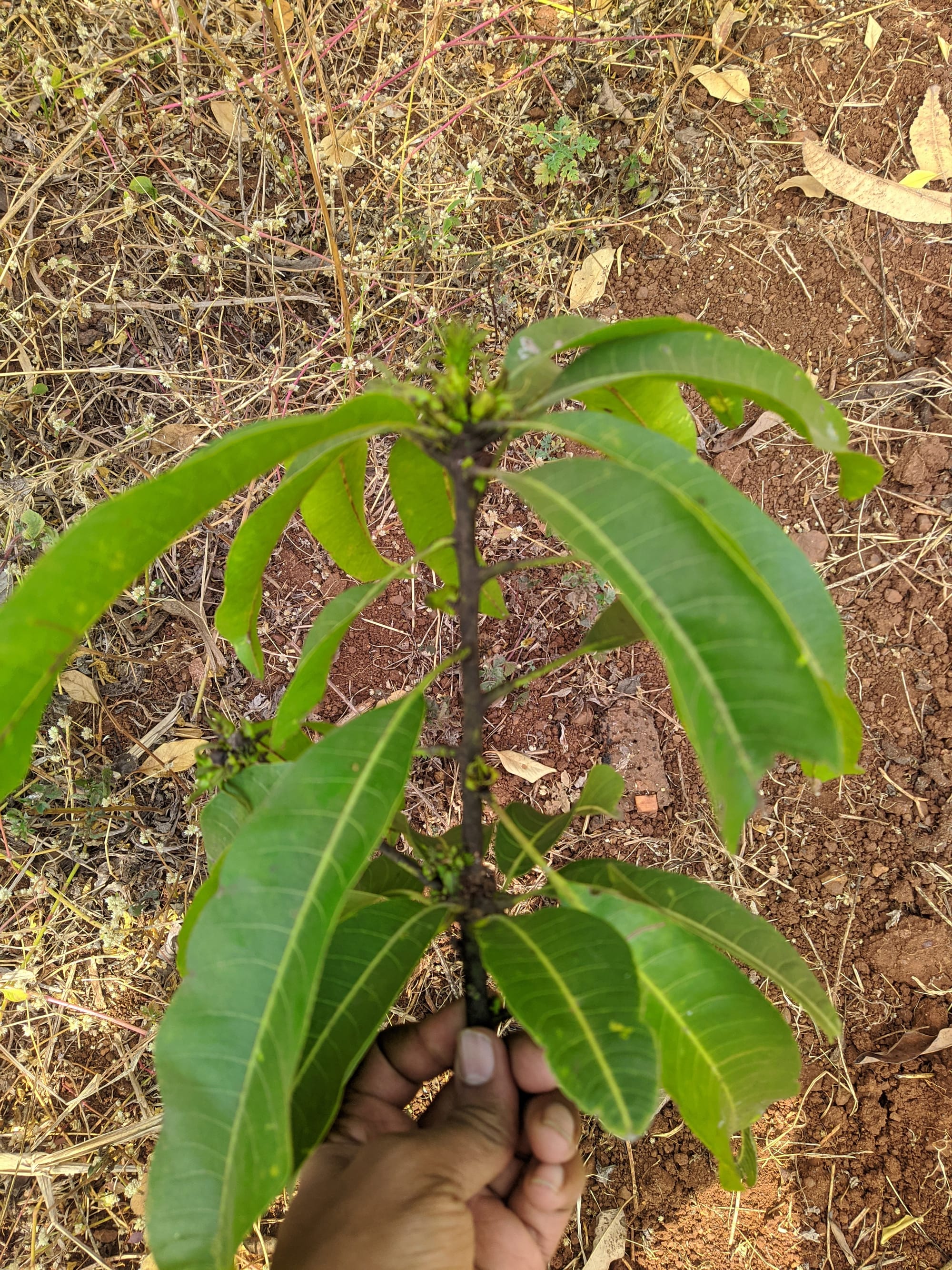
Branch removed by Jaffar
Note - This selective removal of branches is widely practiced as way to improve tree structure, can help in new, healthy branch.
- Termite Infestation or locally called as ಗೊಳ್ಳಿ, on trees is indicative of less water in the soil.
- He also indicated a bunchy, thick growth in flowering/Floral growth called inflorescence or ಹೂವು (Huvu in Kannada) as ಘುಡ್ ರೋಗ (Ghud Roga). He mentioned this as a problematic growth which will affect the fruit production and needs to be monitored.
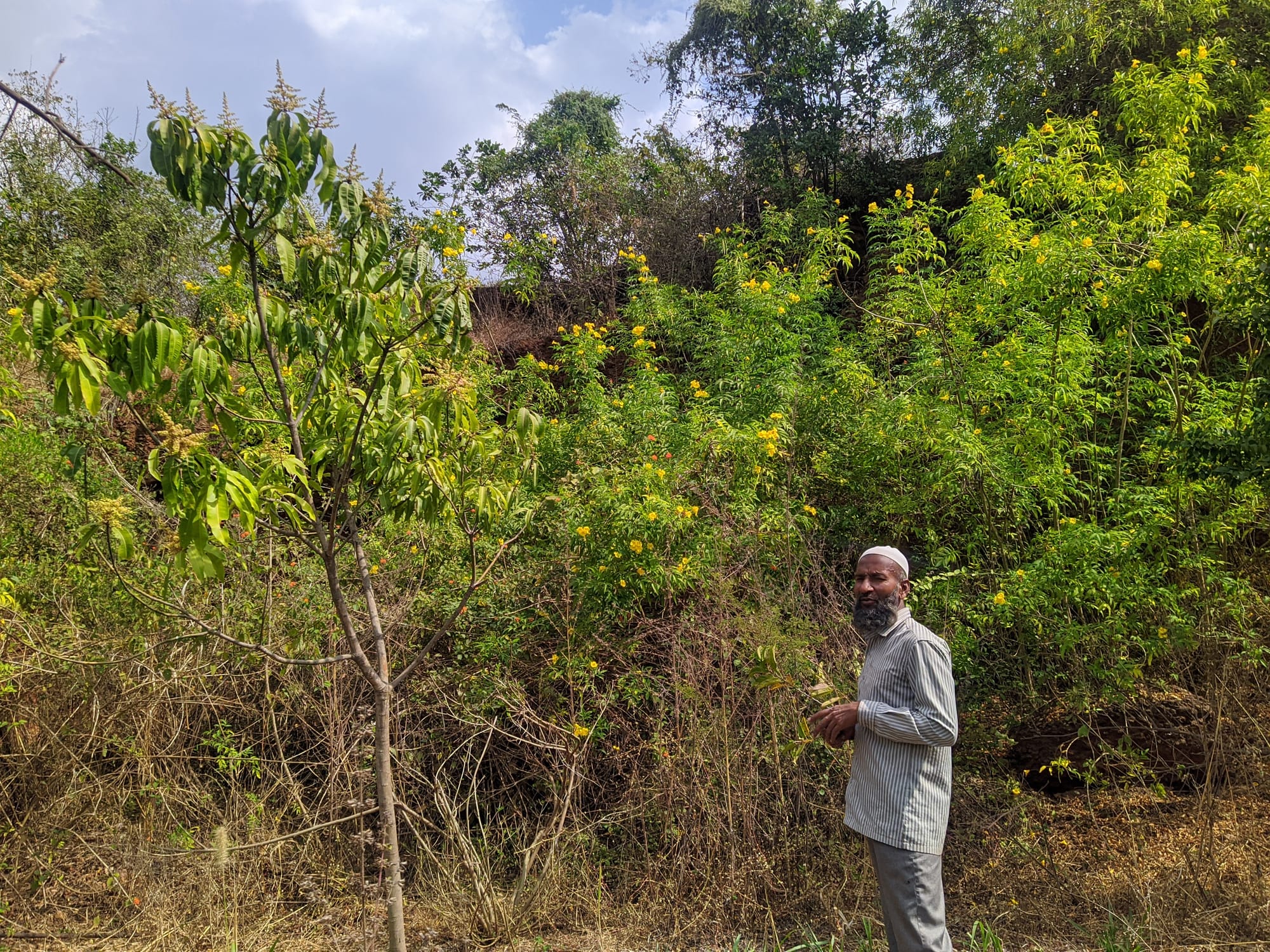
Jaffar Miya with a well growing mango plant (His model plant without malformations)
- Note - This abnormal growth is known as floral malformation, the attached paper is a further study on mango malformations for further reference.
- He grows 900 saplings of Mango trees over three different patches. His experimental nature is quite assertive in his practices, he planted hybrid and commercially available mango saplings on two close patches along with papaya while the other patch initially seen on left to the farm entrance is a well growing large mango stretch. This stretch is his carefully collected and sown native mango seeds, Jaffer proudly notes them as “Badshah of every local village” symbolising them as progenies of ancient, healthy mango trees of villages across the region.
Reflections and learnings
- He follows intercropping as a means to sustainable farming. His belief system is strongly held in preserving soil health, following proper intercropping model, zero chemical utilisation. His beliefs are rooted in deep empathy for nature and the human health, highlighted from his farm modelling, tolerance and co-existance with local biodiversity.
- He maintains that Human diseases are a result of disrespect and disregard shown in modern agriculture practices, asserting that human health is directly connected to health of soil and the plant we grow.
- His experimental and prudent understanding of farming signifies his creative experience in his model. His experiment with sugarcane cropping and intercropping asserts his confidence, experience and risk appetite, while adapting modern developments in farming as bee-keeping, Fruit tree plantations, Farm pond. And keeps traditional basics by growing native mango Badshahs.
- Understanding farming as a continuous ecological process, centering human and nature wellbeing, building cultivation as a sensitive and empathetic practice.
